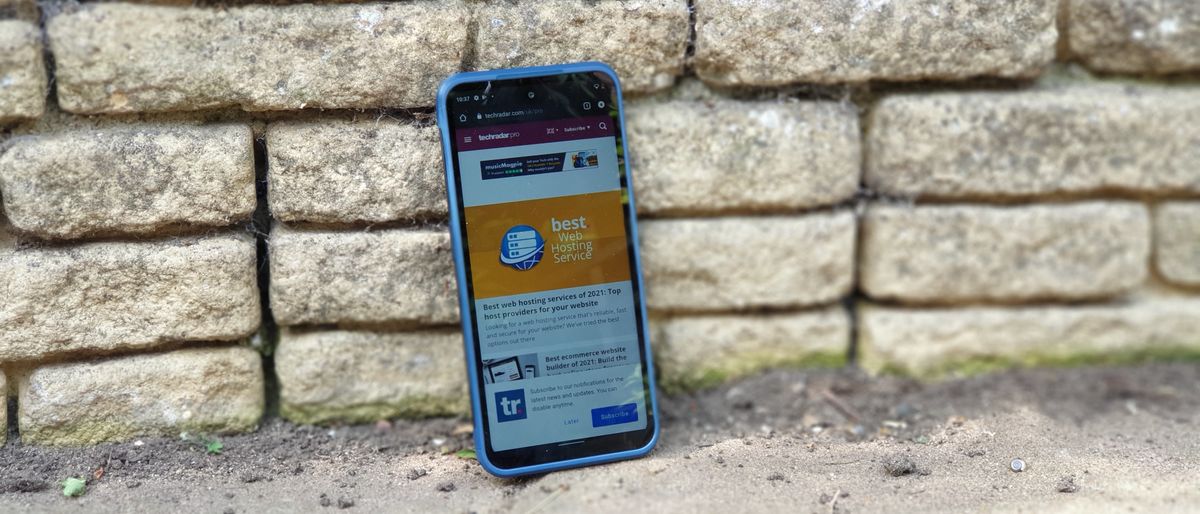TechRadar Verdict
Nokia hits the right notes with its attempt to bring rugged to the mainstream with the XR20. It does so in style with 5G connectivity, a large screen and a sleek design, miles away from traditional rugged smartphones.
Pros
- +
Android One
- +
Free one-year screen replacement
- +
Extended 3-year warranty
- +
Dedicated emergency button
- +
4-year security updates/ 3-year OS updates
- +
3.5mm audio port
- +
Stereo speakers
Cons
- -
Can’t customize Google Assistant button
- -
Can’t run two SIM cards and a microSD card at the same time
Why you can trust TechRadar
Two minute review
Should we be surprised that Nokia has finally launched its first true rugged smartphone? Not really. Years after Samsung with its Galaxy Active range and only a few weeks after the relaunch of the Motorola Defy range, HMD Global, which now owns the Nokia brand, finally woke up to the potential of that small but thriving outdoor market. The end product is the XR20, a Qualcomm-powered, 5G-enabled, shockproof and water resistant smartphone that aspires to be more than just a ruggedized device.
It stands out as a capable all-rounder with above-average after-sales support and warranty that should make it a firm favourite amongst those looking for a business smartphone that can withstand more than just the occasional knocks. Don’t let the entry level hardware shock you though, there’s much more to it than just the specification sheet. We’d just wish that it had a slight more palatable price tag.
- Also check out the best rugged tablets
Nokia XR20 release date and price
In the UK, the XR20 will be available in two configurations (4GB RAM/64GB storage and 6GB RAM/128GB storage) and two colour schemes (Ultra Blue and Granite). The first model carries a £399 price tag (about US$549, AU$749) and the second will cost £449 (AU$839 and 499 Euros). In the US, the phone will go on sale from August 24th for $550 in the US. The phone comes with a three year warranty in Europe and ANZ.
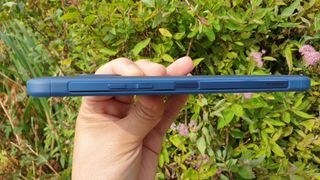
Nokia XR20 design
On the outside, the XR20 doesn’t seem as solidly built as some of the burlier smartphones we’ve seen over the past few months. Featuring a trim 10.6mm profile - the thinnest of its category - and a footprint of 171.6 x 81.5mm, it weighs a mere 248g. Compare that to the Oukitel WP10 for example, another rugged 5G smartphone, which is 50% heavier and 70% thicker.
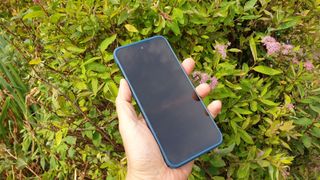
The front of the device is covered with Corning Gorilla Glass Victus which Nokia says is the toughest screen yet on a Nokia smartphone. There’s a tiny pinhole camera near the top edge, one where a red emergency button and the SIM slot are located. The opposite side is occupied by a lanyard attachment loop, a 3.5mm headphone jack, a microphone, a Type-C connector and a downward firing speaker behind a grill.
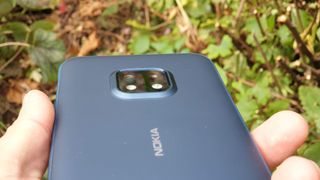
The left edge houses a dedicated, non-customizable Google Assistant button while the right side hosts a rocker volume button and a slight-depressed power button that doubles as a fingerprint scanner. Two camera sensors (48-megapixel and 13-megapixel UW) plus two LED flashes are located on a raised bump on the textured plastic back.
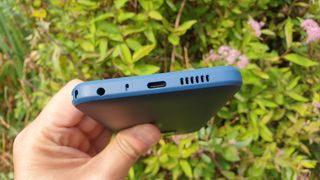
As expected from any rugged smartphone worth the label, the XR20 is MIL-STD-810 rated with a thick rubber protective bumper and a metal frame that should keep it functional in most environments. And yes, you can even wash it with soap and water as it is an IP68 handset.
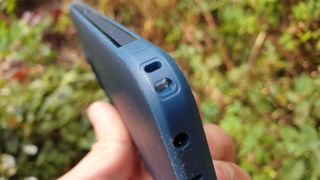
Nokia XR20 specs
The Nokia XR20 comes with the following hardware:
CPU: Qualcomm Snapdragon 480
GPU: Adreno 619
RAM: 6GB
Storage: 128GB
Screen size: 6.67-inch
Resolution: 2400x1080
Weight: 248g
Dimensions: 171.6 x 81.5 x 10.6mm
Rear camera: 48MP, 13MP
Front camera: 8MP
OS: Android 11
Battery: 4.63Ah
The XR20 is a variant of the Nokia X20. They both use the same display (6.67-inch, 1080 x 2400 pixels) and octa-core system-on-chip (Qualcomm Snapdragon 480 5G). The latter is built on an 8nm process which makes it run cooler and more power efficient. Inside the chip is a Snapdragon X51 5G modem-RF system with Wi-Fi 6/Bluetooth 5.1, the Kyro 460 CPU cores and a Qualcomm Adreno 619 GPU.
Although not explicitly mentioned, the device also includes wind-noise cancellation technology, 2x2 MIMO antenna technology (for better Wi-Fi reception), 15W Qi wireless charging technology and support for 18W fast charging for the 4.63Ah battery.
Note that there’s no charger bundled with the device but you do get a SIM tray tool, a quick start paper guide and a Type-C USB cable. Nokia has confirmed that for each XR20 sold, a donation to a charity called ClearRivers will be made.
HMD Global reached out to us with more details about the above "The ClearRivers donation is made for every Nokia charger sale (full amount is donated), since the plug has been removed from the sales box to reduce e-waste. For every phone sold, customers can plant 50 trees via Ecologi in their name to help us reach our first milestone of planting 1 million trees together with our customers."
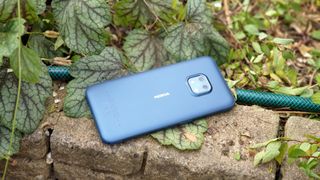
Nokia XR20 in use
When you switch on the XR20, a prominent Android One logo is displayed on the splash screen. As explained by our colleagues, Andrew Williams and James Rogerson, it is “the feature to look for if you want a phone with Android designed exactly as Google intended. It uses a largely unmodified core interface, but with room to support a few little hardware extras.”
But there’s more: Nokia will provide up to four years of monthly security updates, by far the most comprehensive upgrade schedule we encountered amongst rugged smartphones. That’s on top of the three OS upgrades that Android One promises. So Android 14, which should land in 2023, will be the last iteration that will run on the XR20.
This is how the Nokia XR20 performed in our suite of benchmark tests:
PCMark (Work 2.0): 7061
Passmark: 5459
Passmark CPU: 2372
Androbench (sequential): 470 (sequential read); 459 (sequential write)
Androbench (random): 173.14 (random read); 156.2 (random write)
3DMark Wild Life Vulkan: 983
LinPack MFLOPS: 578
When it comes to sheer performance, don’t expect miracles although we did notice that our browser-based tests produced the best scores amongst the 5G rugged devices yet, beating even mainstream Dimension 800 smartphones. Could it be down to Android One, maybe? Storage performance was unexceptional with random/sustained writes being the highlights.
The battery is big by consumer standards but not by ruggedized ones where 8Ah - almost twice the size - models are common. But sheer capacity doesn’t always translate into better battery life and here again Android One promises to get the best out of every mAh through clever battery optimization techniques.
Nokia claims that the so-called “3D nanotextured” rear back will provide better grip but unlike the Defy more pronounced ridges and narrower body profile, this one looks more like a marketing gimmick. The display was usable in bright sunlight thanks to its rated 450 nits brightness.
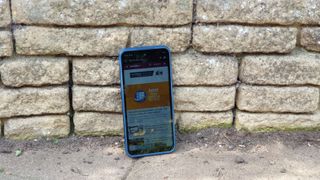
Should you buy the Nokia XR20?
Buy it if:
You are after a recognized brand with guaranteed after sales support
One of the most common issues with the majority of rugged smartphones on the market is the lack of long term commitment to security updates, something that the likes of Ulefone, Doogee, Blackview or Oukitel have yet to follow. Oh and it does come with a one-year free screen replacement warranty.
You want the cleanest Android
Android One is a revelation for those who haven’t tested it before. It brings real improvements, qualitatively and quantitatively, with confirmed OS updates to Android 14 and the purest form on Android, akin to Google’s own Pixel smartphone line.
You want the fastest network speeds
The XR20 uses a mature 5G modem, covering a wide number of bands, which will mean faster than average speeds where 5G is available. It supports 5G standalone (SA) networks and private LTE bands to enhance Industry 4.0 business critical applications within a company’s private wireless network, allowing for faster download speeds and low latency.
You want a hardy smartphone without the hardy look
Nokia’s latest smartphone is a life-proof device without the sort of traditional utilitarian looks associated with similar devices. Nokia was keen to highlight the fact that while it has business and enterprise credentials (it’s validated for Android Enterprise), it is equally at ease as a B2C device.
Don’t buy it if:
You want extra features
Don’t expect to get extra hardware features compared to some other heavyweights in the same price bracket. The Ulefone Armor 11T 5G, for example, costs about the same but comes with a thermal FLIR camera, a bonus for those looking specifically for that feature.
You want to run two SIM cards with a memory card
You can’t run two SIM cards and a memory card simultaneously, which may be an issue if you are a heavy smartphone user (in terms of storage that is, not usage time) and want to use two SIM cards.
- We've also highlighted the best rugged smartphones
- Check out our review of the Cat S52

Désiré has been musing and writing about technology during a career spanning four decades. He dabbled in website builders and web hosting when DHTML and frames were in vogue and started narrating about the impact of technology on society just before the start of the Y2K hysteria at the turn of the last millennium.
